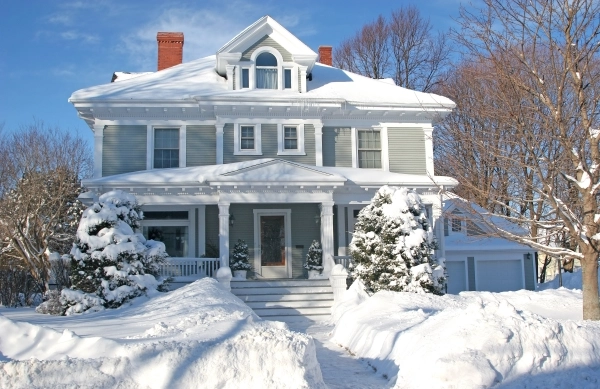How to Heat an Old House Efficiently

There’s so much beauty in older homes. With their unique archways, hidden nooks and spaces, and elaborate décor, they have a lot more character. But when it comes to keeping them warm in the winter, they might take some extra work.
Heating issues are often caused by a lack of space for modern, larger, or additional HVAC systems, as well as poor insulation or inefficient seals. And unfortunately, spending money on upgrades or maintenance for your current heating systems can only do so much!
From quick tips to larger upgrades, there’s a lot you can do to improve your old house’s efficiency. Check out our recommendations for keeping your home at the desired temperature, year-round.
Improve Your Home Heating Without Installing New Systems
Maintaining the original design of your historic home is likely a big priority and concern. Installing new systems can be quite destructive, or simply unfit for your existing space. For some less intrusive options that can still make a big difference in your home’s efficiency, consider:
- Adding insulation. Older homes often lack sufficient insulation. To combat the loss of heat, add more insulation, especially to your attic and basement. For more information, follow our energy efficiency tips for poorly insulated houses.
- Servicing old heating systems. Having an older model heating system (furnace, boiler, mini split, etc.) doesn’t necessarily mean you need to replace the entire unit. Sometimes maintenance or newer parts can greatly improve efficiency. You can have your system checked and find out whether it would benefit more from service or replacement.
- Blocking unused fireplaces. Many older homes have fireplaces that, for one reason or another, are not able to be used. The problem is that a good amount of heat can escape through the chimney. Block off your chimney or permanently seal it.
- Unblocking radiators. If you have home radiators already in use, but you’re not feeling the heat, it may be that your furniture or belongings are blocking and preventing proper circulation of the radiant heat.
- Adding weatherstripping and fixing cracks. Fixing the areas where heated or cooled air escapes your home improves your overall energy efficiency. If you’re not sure where to find these cracks, follow our guide to finding air leaks in your home.
- Installing heavy curtains or making window upgrades. Outdated windows can cause drafts. By using heavier curtains to trap that cold air (when light isn’t needed), or by fully upgrading your windows, you can make your older home feel warmer in the winter.
The Best Ways to Heat an Old House with New Systems
If you’re ready to invest in a more permanent solution, consider upgrading your HVAC systems. Updates from smart thermostats to replacement systems can help to better heat your home and increase efficiency, but may require retrofitting or repurposing spaces in your home.
Options include:
- Upgrading to ductless mini splits. Mini splits are a great upgrade for older homes because the individual units provide more even heating, and don’t require ductwork. They can also provide both heating and cooling, eliminating the need to upgrade separate, older systems.
- Installing a smart thermostat. Smarter thermostats not only allow you to have better temperature control but also optimize your HVAC for better efficiency by tracking issues and setting maintenance reminders. The energy use and expenditure data they provide also provides insight into other energy-saving opportunities.
- Installing a radiator heating system. Though they can be intrusive to your home design, a baseboard steam system or radiant floor heating are great options to consider if you don’t have the space to install a larger system and want more even heating throughout your home.
How to Improve Energy Efficiency in an Old House
Usually, there isn’t a fix-all to your older home’s heating issues. An easy first step is to have your home inspected or to conduct a home energy audit to identify the biggest sources of your energy loss. From there, your local Aire Serv® can help you identify which systems are a good candidate for repair or replacement.
Meanwhile, smaller changes can still make a big impact on cutting costs and improving overall energy efficiency:
- Switching to LED light bulbs.
- Unplugging unused electronics.
- Using cold water when you’re able to.
- Closing off unused rooms.
Ultimately, it can be a little extra work and expense to keep your older home toasty warm in the winter. By addressing the biggest sources of heat loss and employing energy-efficient tactics throughout your home, you can make an impact on your monthly energy bill while saving money.
Better Your Home Heating with Aire Serv
Improving heating and energy efficiency in old houses is a difficult project to balance, but many deem it worthwhile to maintain their original beauty and integrity. At Aire Serv, we want to lend a steady hand to help you find that perfect mix of solutions. Whether you need your heating system repaired, replaced, or supplemented, we’re here to help. Callus or request an appointment online to get started.
 Click to call
Click to call


